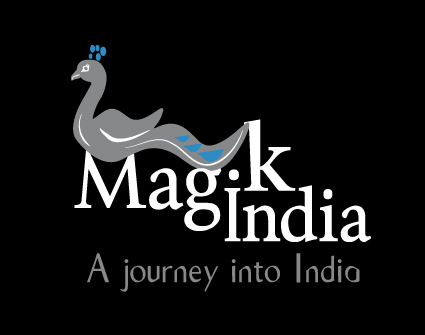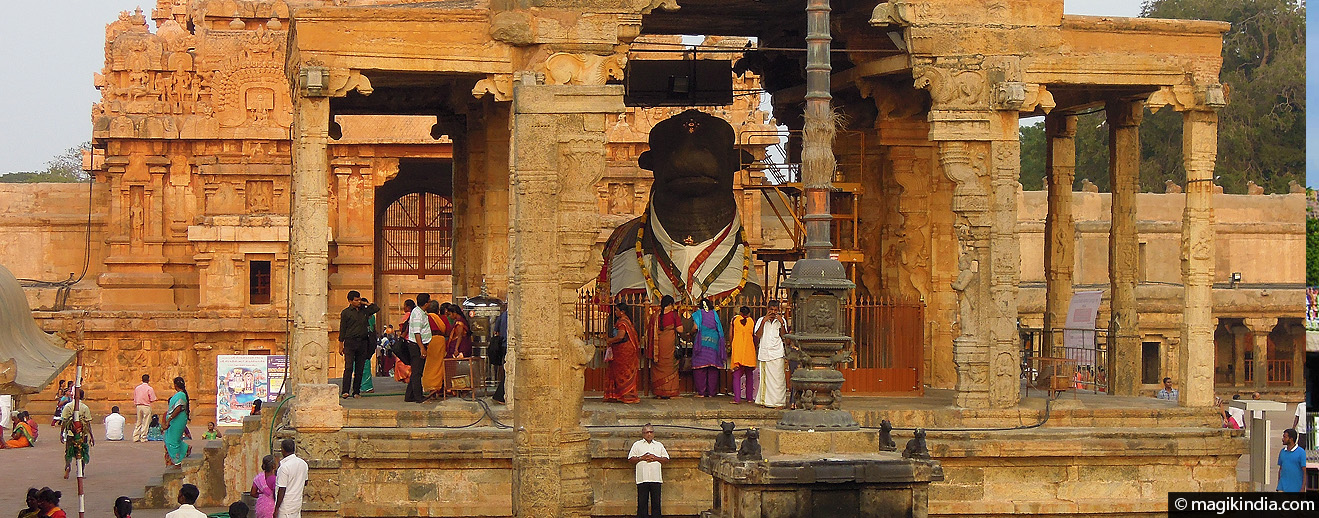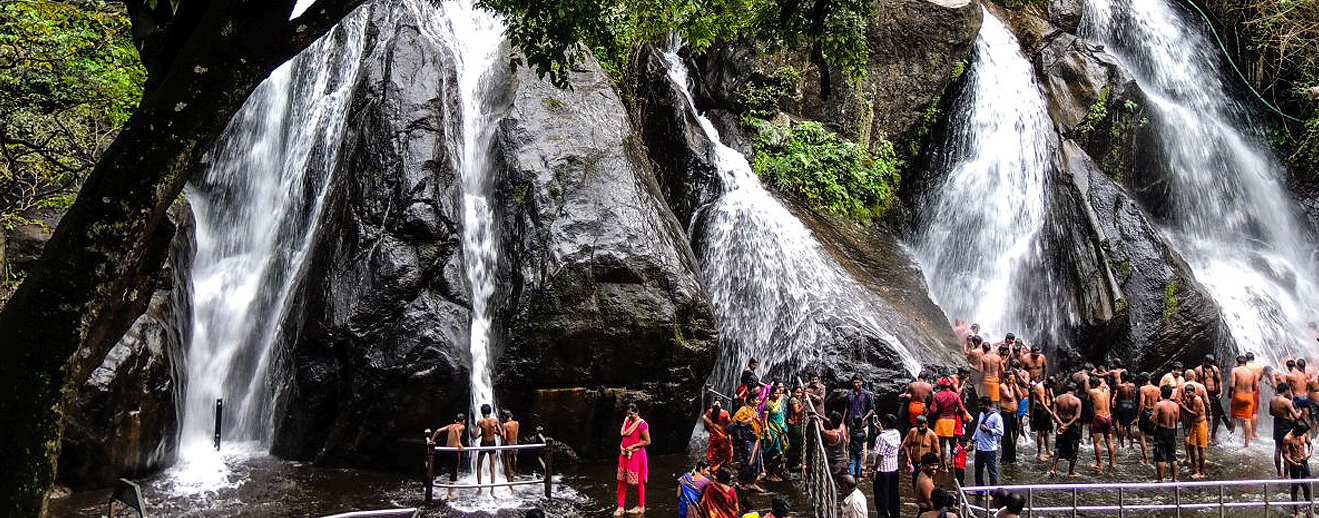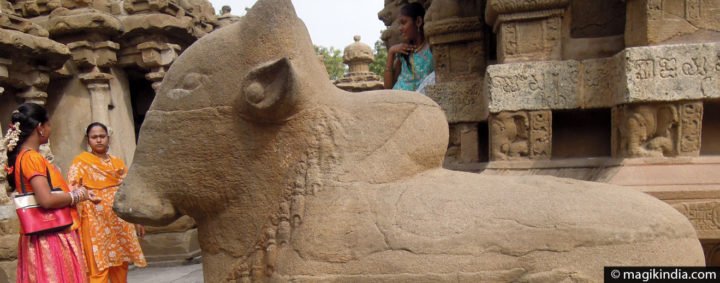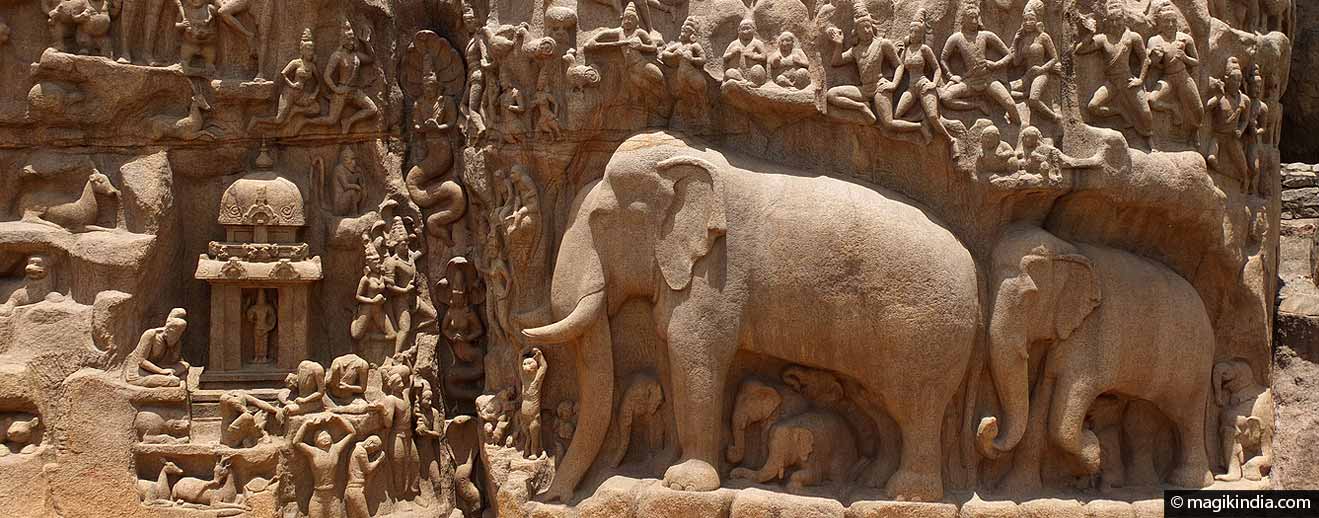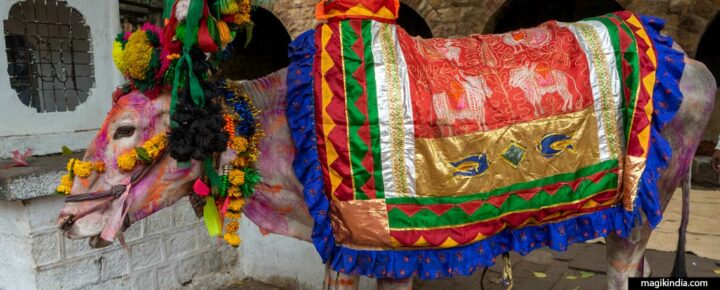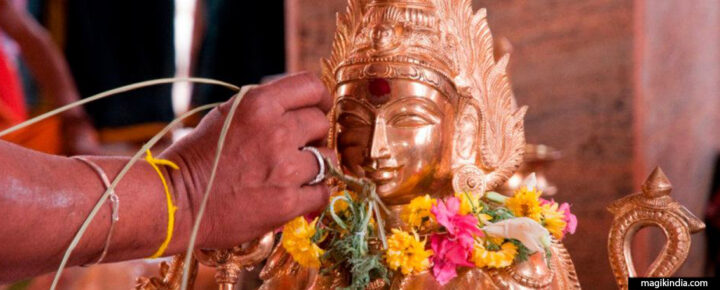
In Tamil Nadu, the nine-day Navaratri festival honoring the Shakti or universal primordial force, is celebrated in a unique way by venerating successively three goddesses: Durga, Lakshmi and Saraswati; three days are dedicated to each of them. This festival punctuated by precise rituals symbolically ends with the victory of light over darkness called Vijayadashami.
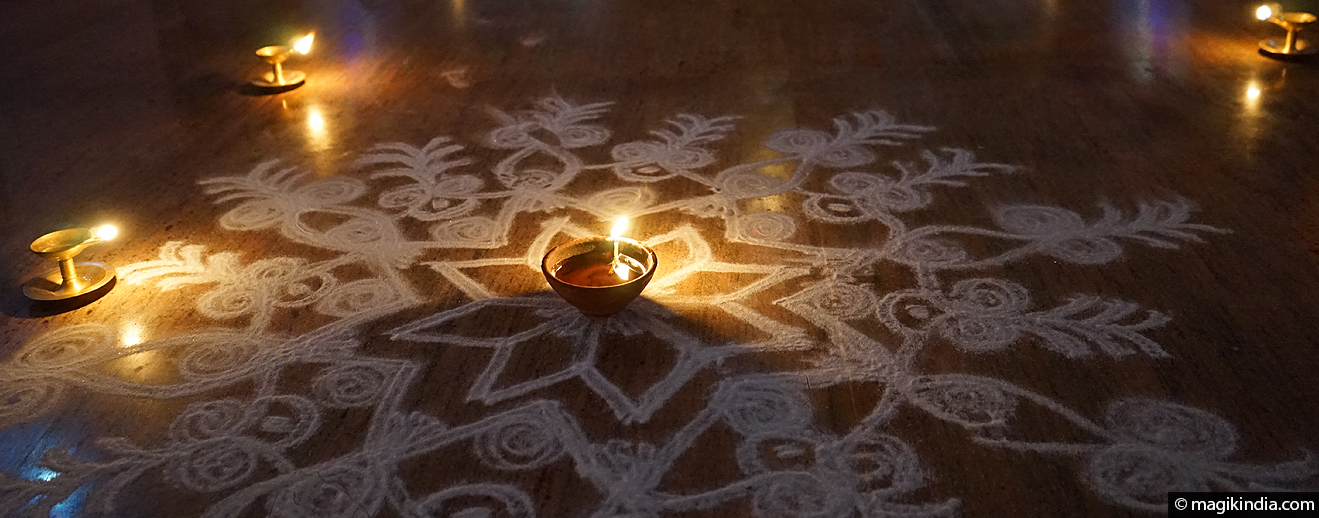
Kartighai or Kartikai Deepam is a Hindu festival of lights that is mainly celebrated in Tamil Nadu, South India. It falls at the full moon (purnami) between mid-November and mid-December –the month of Kartikai in the Tamil calendar, when the moon is in conjunction with the constellation Kritika, the Pleiades.
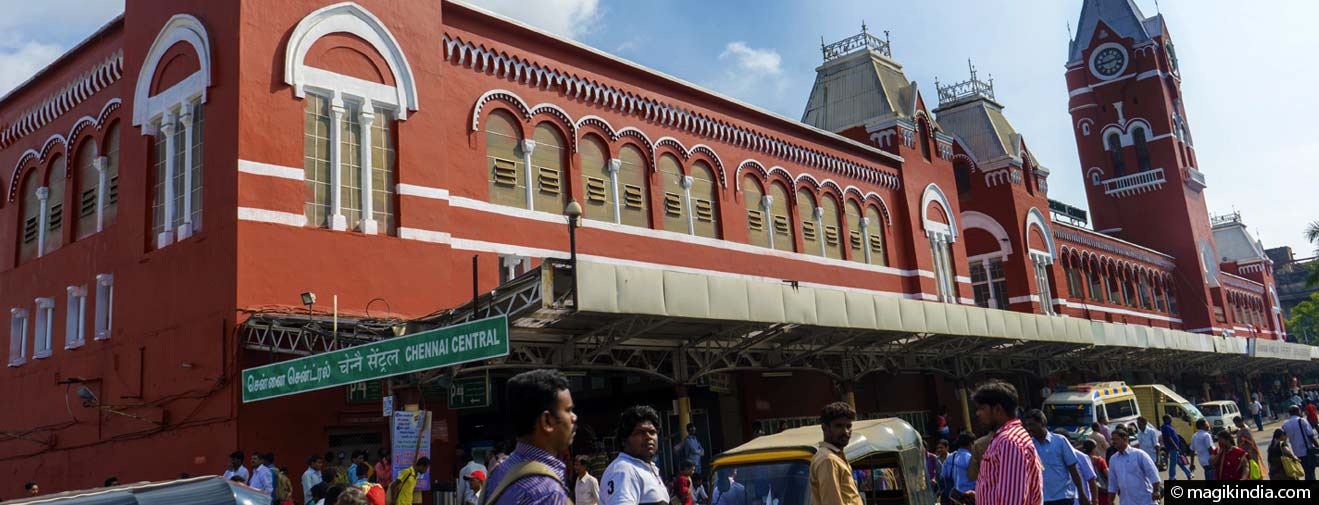
Chennai (formerly Madras) lies on the Coromandel coast in southwest India. It is the capital of the state of Tamil Nadu and one of India’s major economic centres. Chennai also boasts a considerable cultural and artistic heritage, of which Carnatic classical music and the Bharata Natyam dance are prime examples. Chennai is there to be …
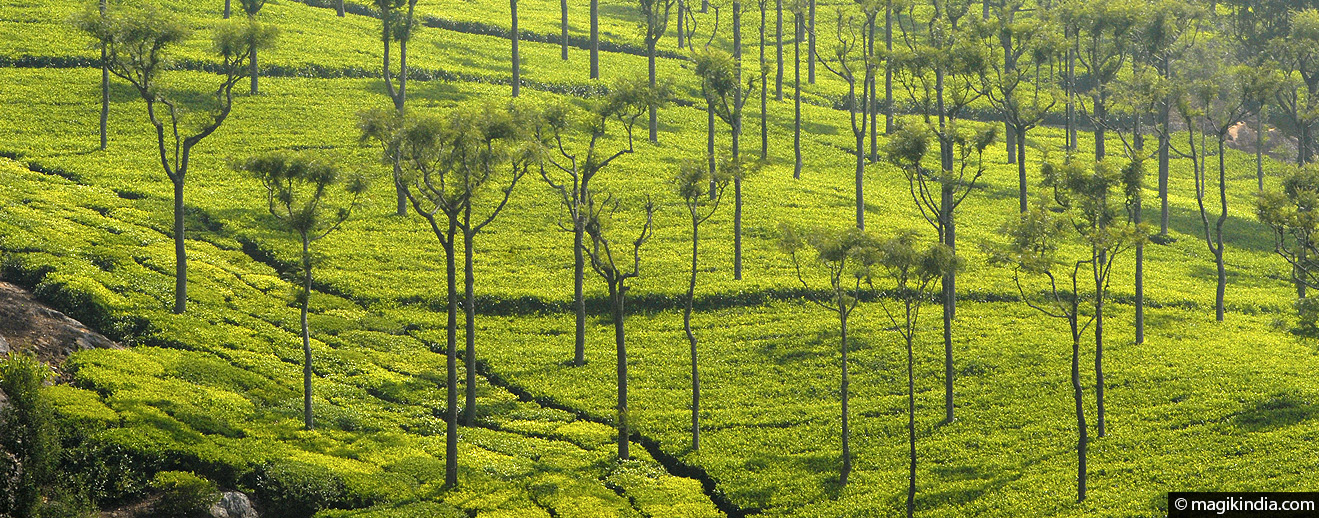
Udhagamandalam, 80km north of Coimbatore (Tamil Nadu), is better known by its English abbreviation: Ooty. It is a hill station 2500m above sea level. Its cool climate, famous tea gardens and dense forests fragrant with eucalyptus make it one of the most popular hill stations in the Nilgiri mountains.
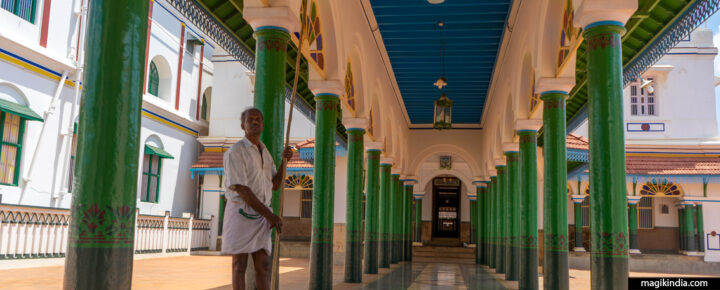
Chettinad must be the most surprising part of Tamil Nadu. In the 19th century, rich merchants, the “Chettiar“, built palatial houses here in a daring and harmonious blend of Eastern and Western styles. This is unique architecture with a charm of its own, inviting travellers to stop awhile for a taste of culture.
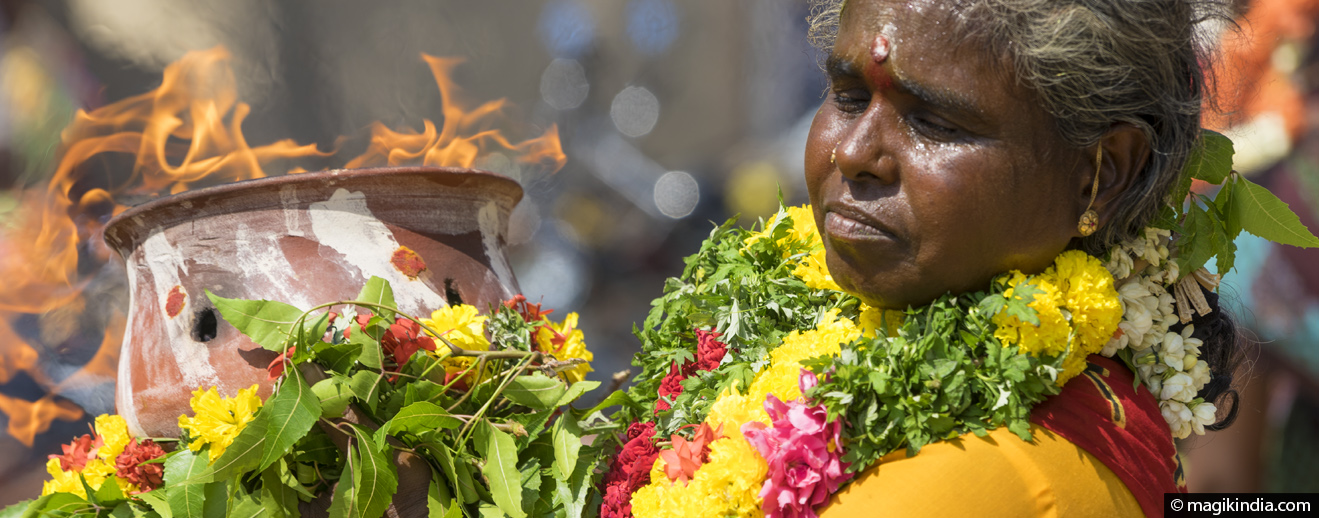
Palani temple is one of the most important temples to the Hindu god Muruga or Kartik, being the third of his Six Holy Abodes (aarupadai veedu). Like most Muruga temples it stands on a hilltop, 100km southeast of Coimbatore and it is buzzling with pilgrims dressed in yellow and green exclaiming ‘Haro Hara’ and dancing …
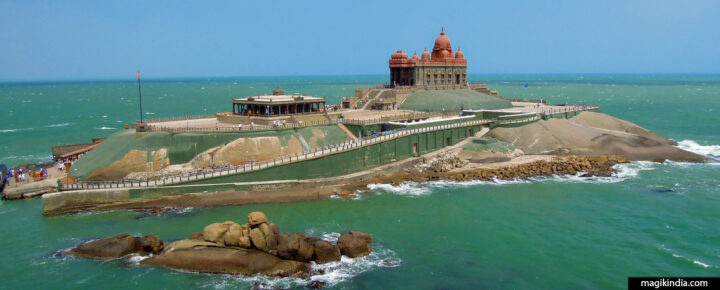
Kanyakumari, formerly called Cape Comorin, it the southern tip of India where the Arabian Sea meets the Indian Ocean. The place is named after the goddess Devi Kanya Kumari, a form of Parvati. The town is mainly a holy place for Hindus because of its Bhagavathy Kumari temple and its connections with Swami Vivekananda, Mahatma …
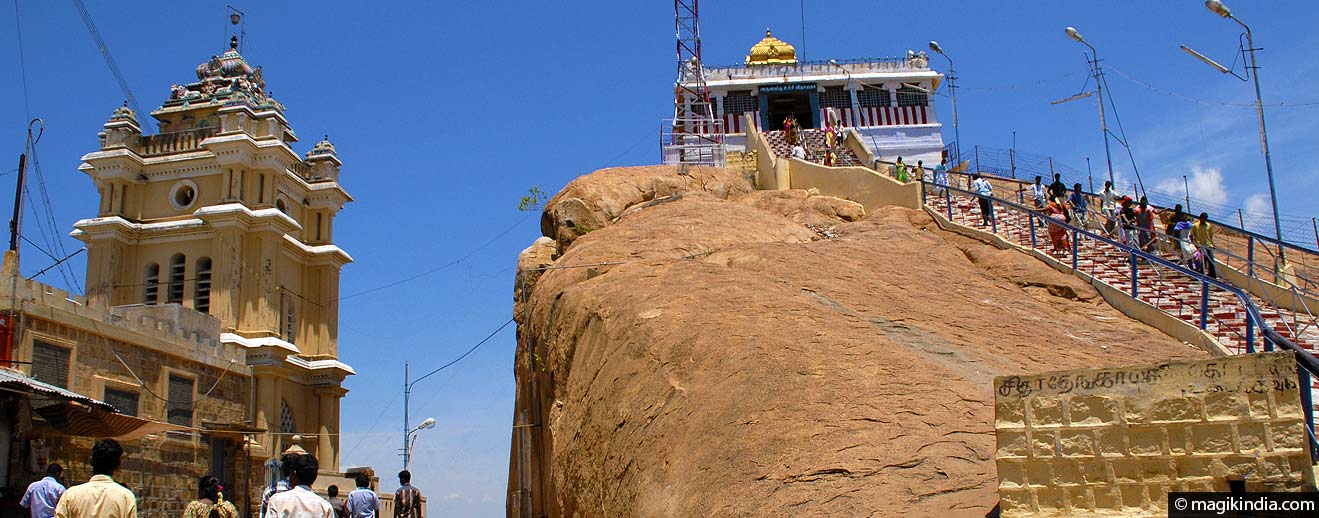
Tiruchirappalli, better known as Trichy is instantly recognisable from the temple perched on high rock outcrop near the centre and it is one of the oldest cities in Tamil Nadu. From this distant past, this bubbling city preserves a great spiritual tradition represented by its innumerable temples of which the famous “Sri Rangam”, the largest …
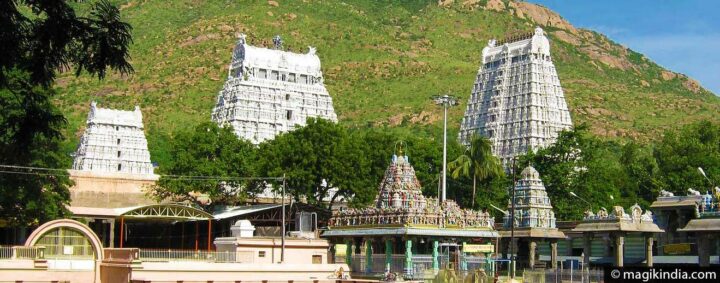
A stop at Tiruvannamalai is a mystical moment. The town takes its name from Annamalaiyar temple around which it grew, and Shiva worship is a key activity for the town. For Hindus, Arunachala Hill overlooking the town represents Shiva himself and is an object of special devotion. The town is full of hermitages and ashrams …
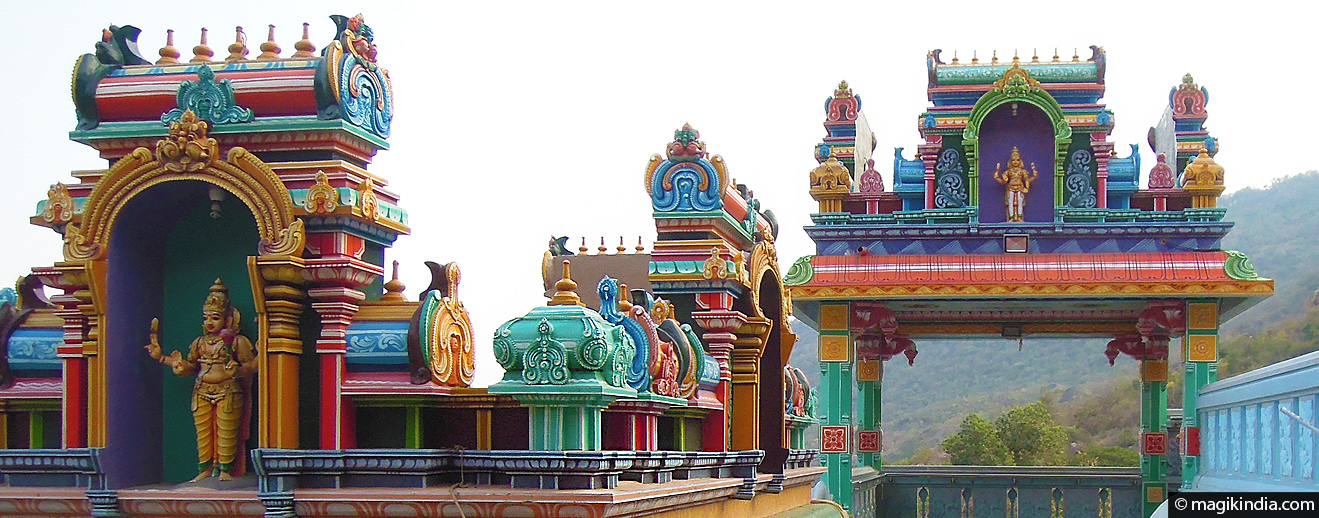
Coimbatore (Kovai in Tamul) is the second largest city in Tamil Nadu and a major business centre. It has been called the “Manchester of the South” because of its textiles industry. Its main assets are its position close to Kerala and the hill stations of Nilgiri mountains. Aficionados of Hindu temples won’t be disappointed either. …
